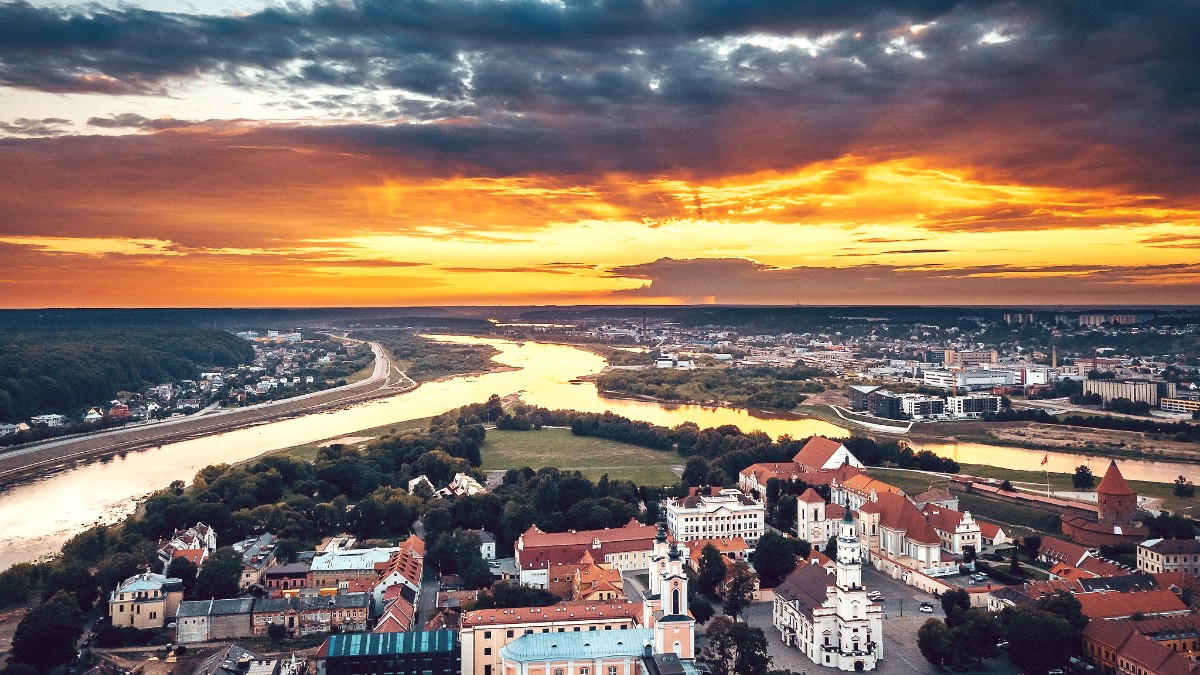
Central Lithuania, Lithuania
Buses (Autobusai) cover extensive routes throughout Kaunas, connecting the Old Town, New Town, residential districts, universities, and peripheral areas. They are a main mode of transport for both locals and visitors. Trolleybuses (Troleibusai), electric buses operating on overhead power lines, serve many core routes, notably in the city center and New Town. They are an environmentally cleaner option for urban travel.
The network is well-developed, reaching most points of interest. You will find that public transport is a reliable and affordable way to explore Kaunas.
The main public transport hub is the Kaunas Bus Station. Digital maps and apps like Trafi or Google Maps furnish real-time schedules and route planning.
Newer buses and trolleybuses are generally low-floor and equipped with ramps. Many bus stops also have raised platforms. Older infrastructure, especially in the Old Town, can present challenges.
Download and use apps like Trafi or Google Maps for real-time tracking. Always validate your e. Ticket upon boarding to avoid fines. Travel during off-peak hours to avoid crowds.
Official, licensed taxis are typically yellow or display a clear "TAXI" sign on their roof. They should also have a company logo and a meter inside.
You can hail a taxi on the street, especially in busier areas. Find designated taxi stands near major transport hubs. Always ensure the driver activates the meter.
Fares generally reasonable (base ~€1.00-€1.50, per-kilometer ~€0.70-€1.00). Many prefer cash; have small Euro denominations.
Bolt is by far the most popular app in Kaunas. Uber is available but less prevalent. Bolt has fare estimates, cashless payment, and driver tracking.
Renting a vehicle offers flexibility for exploring Kaunas and the surrounding region at your own pace.
Kaunas is a very walkable city, notably its historic core. The Old Town is ideal for walking. Laisvės alėja is entirely pedestrian-only.
Local tour operators have guided walking tours, offering insights into history, architecture, and culture. Self-guided options are available with maps.
Kaunas has an expanding network of dedicated bicycle paths along riverbanks and connecting parks. This makes cycling a pleasant way to explore.
Beyond standard public transport, Kaunas has a few unique or specialized ways to get around or experience the city.
Efforts are being made to better accessibility in Kaunas. Newer public transport vehicles are low-floor and generally accessible.
Major museums and renovated public spaces often have ramps, elevators, or other provisions for wheelchair users.
Older infrastructure, like the cobblestone streets in the Old Town, or historical buildings without modern adaptations, still pose challenges.
Check individual attraction websites or contact the Kaunas Tourism Information Center for specific accessibility details before your visit.
Some local tour operators may offer specialized accessible tours for travelers with mobility needs.
These tours ensure a more comfortable experience of the city.
Ride both the Žaliakalnis and Aleksotas Funiculars. They offer unique historical experiences and present some of the best panoramic views of Kaunas.
Explore Kaunas's street art scene, a free and visually striking way to experience the city's contemporary culture. Look for murals in various districts.